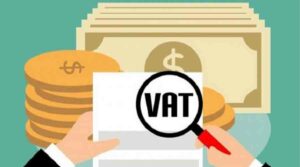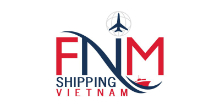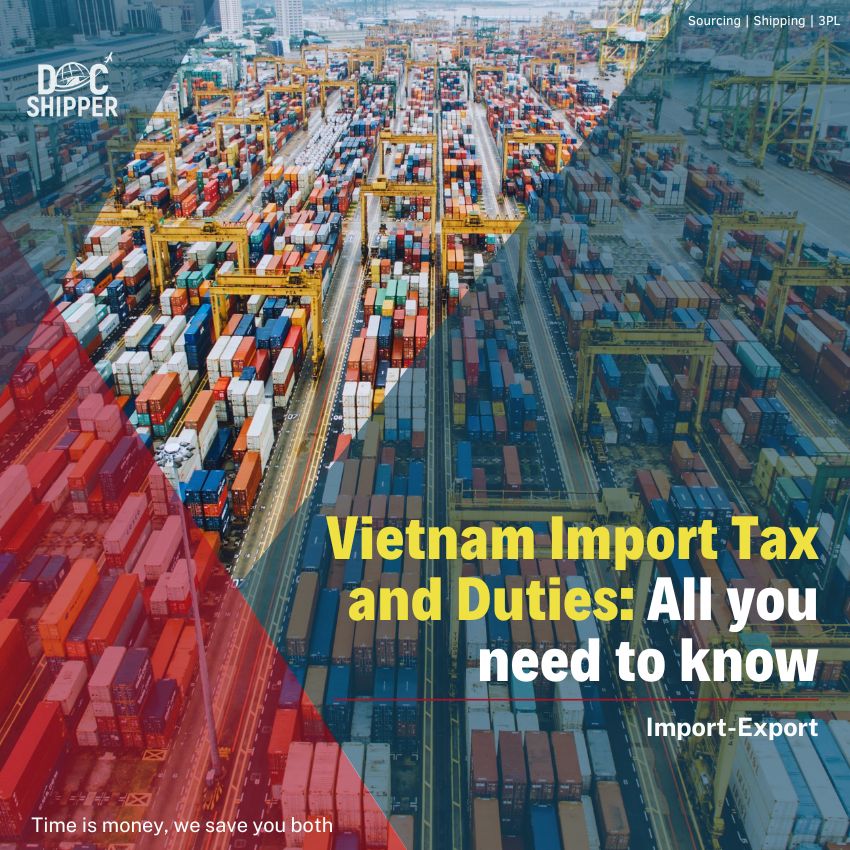If you're an international trade professional or planning to import goods into Vietnam, it is essential to understand the tax implications of your operations. Vietnam, as a booming economy, offers many opportunities for businesses around the world, but knowing the rules regarding import taxes and duties is crucial to avoiding obstacles when clearing customs and avoid unpleasant surprises.
FNM tip: FNM Vietnam is an international freight forwarder that simplifies your logistics by becoming your single point of contact for a wide range of services. Relax and leave the whole process to us, from packaging, transport, customs clearance and paperwork, regardless of the shipping method (air, sea, road). Get a free quote today in less than 24 hours by contacting us. You can also call an expert if you have a question.
Value Added Tax (VAT)
In Vietnam, Value Added Tax (VAT) is one of the main indirect taxes applied on goods and services. It is governed by the Vietnam VAT Law, which defines applicable rates, exempt products and registration procedures for businesses.
Here are the important details regarding VAT in Vietnam:
VAT percentage
Starting from 1st July 2023 until 31st December 2023, Vietnam will lower the VAT rate from the usual 10% to 8% for goods and services previously taxed at 10%. This reduction applies to specific items, while some products and services may qualify for even lower VAT rates or be completely exempt from VAT, meaning no tax is added to their value.
Products Exempt from VAT
Certain categories of goods and services are exempt from VAT in Vietnam. These exemptions are mostly intended to encourage the consumption of essential products, to promote certain industries or to support social initiatives.
Among the products exempt from VAT in Vietnam, we can mention:
- Staple foods like rice, vegetables, fruits, etc.
- Essential medical products such as basic drugs, vaccines, etc.
- Books and newspapers.
- Certain social services provided by charities and non-profit organizations.
It is essential for businesses to regularly check the list of VAT exempt products, as it may be subject to periodic updates by the Vietnamese tax authorities.
Procedures for VAT registration
For companies doing business in Vietnam subject to VAT, here are the key steps to register with the relevant tax authority:
1. Registration with the Tax Authorities: Businesses must go to the Vietnam tax authority to begin the process of VAT registration. This initial step involves filling out the necessary forms and providing the required documents.
2. Obtaining the Tax Identification Number (TIN): Once registration is complete, the Vietnamese Ministry of Finance will give you a unique Tax Identification Number. This number will be used for all commercial transactions subject to VAT.
3. Collection of VAT on sales: After obtaining the TIN, the business is required to collect VAT on sales of goods and services subject to tax. As the standard rate of VAT in Vietnam is 10%, this tax will be added to the selling price of the products or services concerned.
4. Declaration and Periodic Payment: The VAT collected must be declared and paid periodically to the Vietnamese tax authorities. Companies generally have the choice between monthly or quarterly declarations, depending on their turnover.
Note: Customs procedures in Vietnam are complex and subject to change. For up-to-date information on customs regulations and processing times, please contact us.
Deduction of VAT

- Businesses registered for VAT in Vietnam can benefit from a valuable advantage: they are allowed to deduct the VAT they have paid on purchases made for their business activities.
- This deduction applies to the VAT paid on goods and services that are essential for the company's operations.
- By deducting the VAT paid on these necessary purchases, businesses can effectively reduce the total amount of VAT they owe to the government.
- This deduction mechanism helps companies minimize their tax burden and improve their financial bottom line, which is particularly beneficial for businesses operating in a competitive market.
- In essence, the VAT deduction system encourages businesses to invest in their operations and reinvest savings into further growth and development.
- However, it is crucial for businesses to maintain accurate records and adhere to the tax regulations to ensure they are eligible for these deductions and comply with the law.
Customs Duties in Vietnam
Customs duties, also known as import duties, are taxes applied on goods imported into Vietnam. They are used to protect local industries, regulate foreign trade and generate revenue for the state. Here are the important details regarding customs duties in Vietnam:
Vietnam Customs Duty Calculation Formula
Customs duties in Vietnam are taxes imposed on imported goods and are calculated based on the customs value of the products. The customs value is determined using the cost, insurance, and freight (CIF) of the imported goods.
Here is a detailed explanation of the formula for calculating customs duty in Vietnam:
- Customs value
The customs value is the starting point for calculating customs duties. It represents the total value of the imported goods, including the cost of purchasing the products, the insurance costs related to their transport and the freight costs for their delivery to the port of arrival in Vietnam.
- Customs rate
The customs rate is the percentage applied to the customs value to determine the amount of customs duties to be paid. This rate may vary depending on the type of imported product and Vietnam's tariff policies. It is important to check the correct tariff classification of the goods, as different products may be subject to different customs rates.
Calculation formula: The formula for calculating customs duties is simple:
Customs Duties = Customs Value x Customs Rate
For example, if the customs value of a good is $10,000 and the applicable customs rate is 15%, the customs duty payable would be:
$10,000 x 0.15 = $1,500
This means that the importer will have to pay $1,500 in customs duties for that specific commodity.
Vietnam Import Tariff Types
In addition to customs duties, Vietnam imposes three other types of taxes on imported goods: Value Added Tax (VAT), Special Consumption Tax (SCT) and Environmental Protection Tax ( FTE). Here are details about each tax, along with sample calculations:
Value Added Tax (VAT)
VAT is an indirect tax applied to goods and services, including imported goods. VAT rates in Vietnam can be 0%, 5% or 10%, depending on the nature of the goods. Certain essential products may be exempt from VAT. The amount of VAT is calculated based on the value added in the supply chain.
Example of VAT Calculation:
Suppose the value of the imported goods is USD 10,000, and the applicable VAT rate is 10%.
VAT = $10,000 * 10% = $1,000.
Special Consumption Tax (SCT)
The SCT is imposed on consumer goods considered as luxury items or having a negative impact on health. Products subject to SCT are also subject to VAT. The amount of the SCT varies according to the nature of the product.
Example of SCT Calculation:
Let's take the example of an imported car with a value of 30,000 USD, subject to a rate of SCT of 30% and a rate of VAT of 10%.
VAT = $30,000 * 10% = $3,000 (VAT).
SCT = ($30,000 + $3,000) * 30% = $9,900.
Environmental Protection Tax (EPT)
The EPT is applied to goods likely to have an adverse effect on the environment. EPT rates vary by product type. This tax aims to encourage companies to take into account the environmental impacts of their products.
Example of EPT Calculation:
Suppose chemicals are imported, with an EPT rate of 500 VND/kg. If the quantity imported is 1000 kg, then:
EPT = 500 VND/kg * 1000 kg = 500,000 VND.
Calculation of Total Import Taxes:
The total calculation of import taxes for imported goods is made by adding the amounts of VAT, SCT and EPT (if applicable) to the value of the imported goods.
Example of Total Import Tax Calculation:
Let's go back to the example of the imported car (value of 30,000 USD) subject to 10% VAT and 30% SCT.
VAT = 3,000 USD (calculated previously).
SCT = 9,900 USD (calculated previously).
Total Import Tax Calculation = $30,000 + $3,000 + $9,900 = $42,900.
It is essential that importers familiarize themselves with the applicable tax rates and correctly use the Harmonized System codes to determine the taxes to be paid when importing goods into Vietnam. Taxes may vary depending on the nature of the products being imported, so it is recommended to consult international trade experts to ensure proper tax compliance.
Note FNM: Did you know? You can find the applicable rates of customs duties on the tariff database of the Vietnamese customs website . It is essential to pay customs duties before customs clearance to avoid delays and additional costs. Late payment may cause delays in the customs clearance process and incur additional costs. Pay attention to deadlines to facilitate the customs clearance of your goods.
Preferential Tariffs
Vietnam has established strong trade partnerships by signing several international agreements, including free trade agreements and preferential trade agreements with various countries. Thanks to these agreements, Vietnam can apply preferential tariffs on certain goods imported from these partner countries. Preferential tariffs are generally set at reduced rates compared to normal tariffs, which provides significant benefits to companies importing these products.
These preferential tariffs aim to encourage bilateral trade and strengthen trade ties between Vietnam and its international partners. By applying tariff barriers, preferential trade agreements reduce market access and allow Vietnamese companies to import high quality products at more competitive costs.
Excise Tax
Excise tax in Vietnam is an additional charge applied on some specific products, in addition to customs duties and VAT. This tax is primarily intended to discourage the consumption of products considered harmful to health or the environment. Products subject to excise tax generally include alcoholic beverages, tobacco products, luxury cars, energy products and certain polluting products.
The amount of excise tax varies depending on the type of product. It is usually calculated on the basis of the quantity, volume or value of the product, and can be fixed or proportional. For example, for alcoholic beverages, the excise tax is often calculated based on the volume of alcohol contained in the beverage. Similarly, for luxury cars, the excise tax may be based on the value of the vehicle.
Access tax has a dual purpose
To generate revenue for the state and to reduce the consumption of harmful products. By exploiting the cost of these products, the government aims to discourage their excessive consumption while helping public finances.
For companies involved in the import or sale of products subject to excise tax, it is essential to fully understand the rates and application of this tax in order to comply with Vietnam customs regulations and avoid possible penalties. Excise tax can have a significant impact on product costs and should be considered when managing business operations in the country.
Note FNM: FNM is your partner for international shipments, whether by air or sea. We handle your shipment right from customs clearance and through every step of the shipping process. With FNM, you benefit from a single point of contact to simplify your procedures. To learn more about our services, contact our experts now! Call us !
FAQ | Vietnam Import Tax and Duties: All you need to know
What are the consequences for non-compliance with customs regulations in Vietnam?
In the event of non-compliance, companies can face severe customs penalties, which can cause delays and additional costs for their import operations.
Does Vietnam offer preferential tariffs on imports?
Yes, Vietnam is a signatory to international trade agreements which allow the application of preferential tariffs on certain goods from partner countries.
What are the advantages for companies to use the preferential tariffs in Vietnam?
The advantages for companies to use the preferential tariffs in Vietnam lie firstly in the reduction of import costs. By benefiting from preferential tariffs, companies can save on customs duties, allowing them to import goods at a lower cost. This cost reduction contributes to improving their profitability and competitiveness in the Vietnamese market.
DocShipper info: Did you like this article? You may also like the following:




